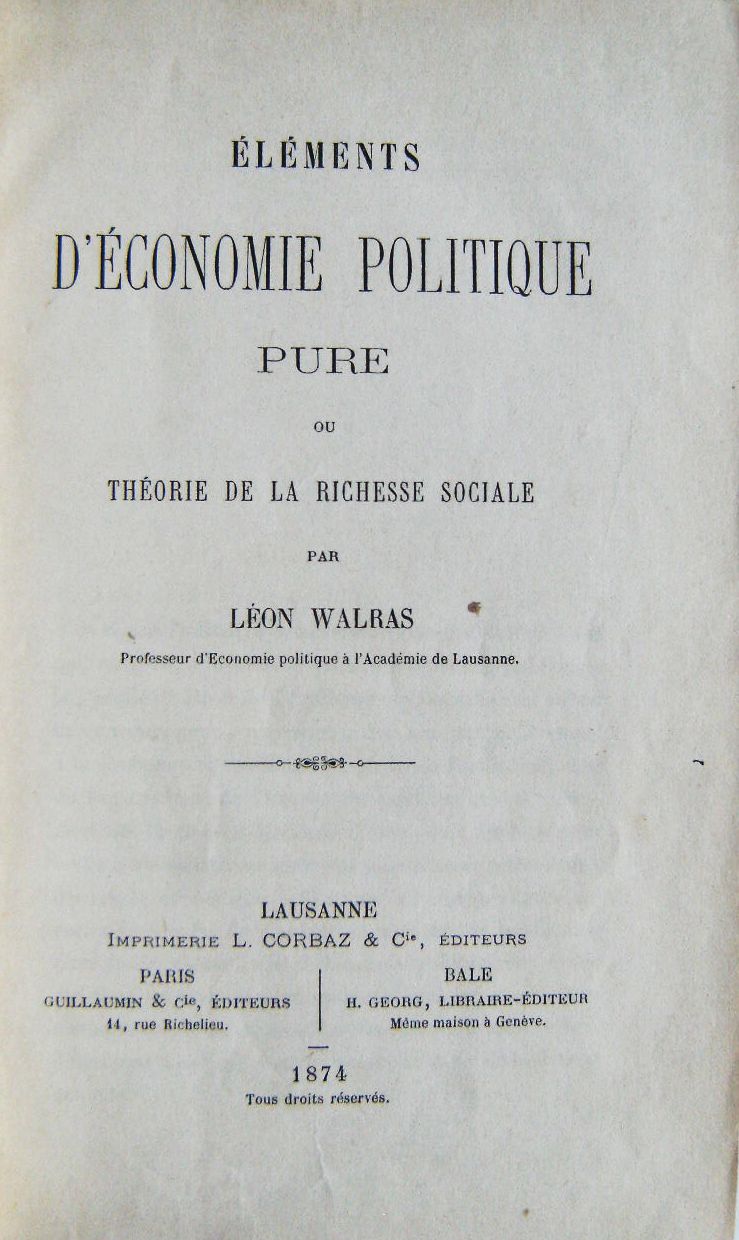The foundation of the modern theory of general
economic equilibrium
First edition, rare particularly with the second part published in 1877. Walras' most important book in which he exposed the general equilibrium theory. The first part deals with the theory of exchange, the second with the theory of production. ‘Jevons' Theory of political economy (1871) was not well received when it appeared, but it was read. Menger's Principles of economics (1871) was both read and well received, at least in his own country. But Walras' two-part Elements of pure economics (1844-77) was monstrously neglected everywhere despite his infatigable efforts to get the book noticed. That was in part because Walras set himself a task that went beyond Jevons and Menger, his co-discoverers of marginal utility theory, namely, to write down and solve the first multi-equational model of general equilibrium in all markets. In addition, Walras went far beyond Jevons in employing a mathematical model of exposition, and this was enough to scare off most of his contemporary readers. But wheras Jevons and Menger are now regarded as historical landmarks, rarely read purely for their own sake, posthumous appreciation of Walras's monumental achievement has grown so markedly since the 1930s that he may now be the most widely-raed nineteenth-century economist after Ricardo and Marx.' A second edition revised and enlarged edition appeared 1889. *Einaudi 5965. Mattioli 3796. M.Blaug, Great economists before Keynes, p.262. |

